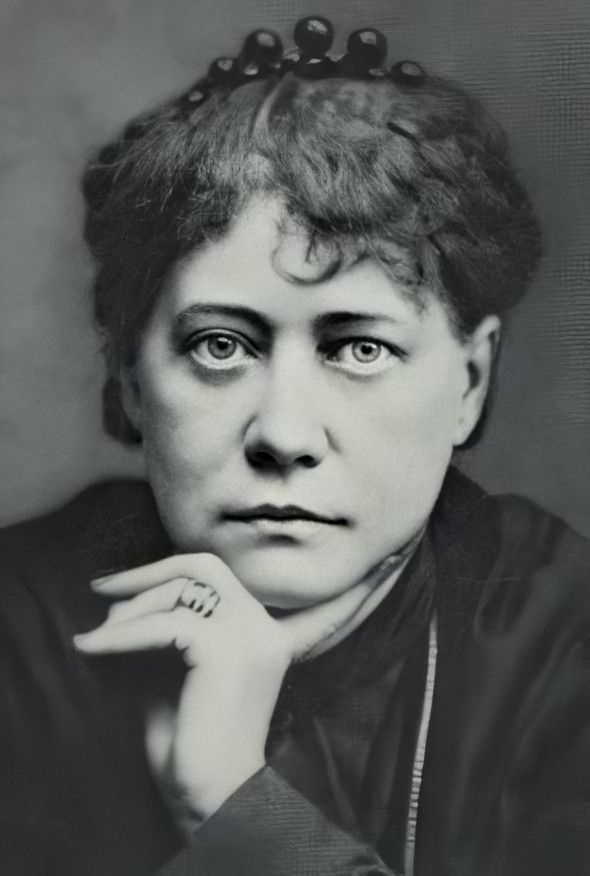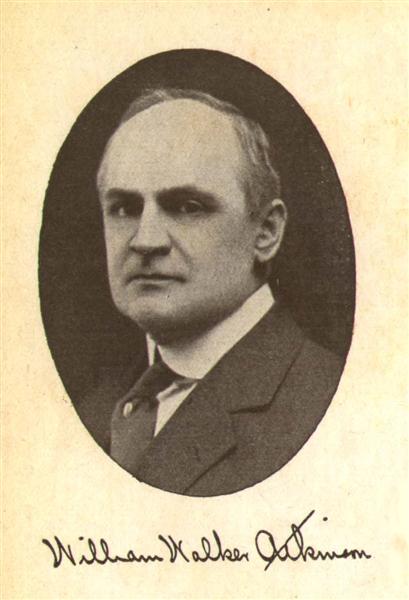As Above, So Below on:
[Wikipedia]
[Google]
[Amazon]
 "As above, so below" is a popular modern
"As above, so below" is a popular modern
 Among historians of philosophy and science, the verse is often understood as a reference to the supposed effects of
Among historians of philosophy and science, the verse is often understood as a reference to the supposed effects of
 From Blavatsky's ''
From Blavatsky's ''


 "As above, so below" is a popular modern
"As above, so below" is a popular modern paraphrase
A paraphrase () or rephrase is the rendering of the same text in different words without losing the meaning of the text itself. More often than not, a paraphrased text can convey its meaning better than the original words. In other words, it is a ...
of the second verse of the ''Emerald Tablet
The Emerald Tablet, also known as the Smaragdine Table or the ''Tabula Smaragdina'', is a compact and cryptic text traditionally attributed to the legendary Hellenistic period, Hellenistic figure Hermes Trismegistus. The earliest known version ...
,'' a short Hermetic text which first appeared in an Arabic source from the late eighth or early ninth century. The paraphrase is based on one of several existing Latin
Latin ( or ) is a classical language belonging to the Italic languages, Italic branch of the Indo-European languages. Latin was originally spoken by the Latins (Italic tribe), Latins in Latium (now known as Lazio), the lower Tiber area aroun ...
translations of the ''Emerald Tablet'', in which the second verse appears as follows:
That which is above is like to that which is below, and that which is below is like to that which is above.The paraphrase is peculiar to this Latin version, and differs from the original Arabic, which reads "from" rather than "like to". Following its use by prominent modern
occultists
The occult () is a category of esoteric or supernatural beliefs and practices which generally fall outside the scope of organized religion and science, encompassing phenomena involving a 'hidden' or 'secret' agency, such as magic and mystici ...
such as Helena P. Blavatsky (1831–1891, co-founder of the Theosophical Society
The Theosophical Society is the organizational body of Theosophy, an esoteric new religious movement. It was founded in New York City, U.S.A. in 1875. Among its founders were Helena Blavatsky, a Russian mystic and the principal thinker of the ...
) and the anonymous author of the ''Kybalion'' (often taken to be William W. Atkinson, 1862–1932, a pioneer of the New Thought
The New Thought movement (also Higher Thought) is a new religious movement that coalesced in the United States in the early 19th century. New Thought was seen by its adherents as succeeding "ancient thought", accumulated wisdom and philosophy ...
movement), the paraphrase started to take on a life of its own, becoming an often cited motto in New Age
New Age is a range of Spirituality, spiritual or Religion, religious practices and beliefs that rapidly grew in Western world, Western society during the early 1970s. Its highly eclecticism, eclectic and unsystematic structure makes a precise d ...
circles.
Scholarly interpretations
 Among historians of philosophy and science, the verse is often understood as a reference to the supposed effects of
Among historians of philosophy and science, the verse is often understood as a reference to the supposed effects of celestial mechanics
Celestial mechanics is the branch of astronomy that deals with the motions of objects in outer space. Historically, celestial mechanics applies principles of physics (classical mechanics) to astronomical objects, such as stars and planets, to ...
upon terrestrial events. This would include the effects of the Sun upon the change of seasons
A season is a division of the year based on changes in weather, ecology, and the number of daylight hours in a given region. On Earth, seasons are the result of the axial parallelism of Earth's axial tilt, tilted orbit around the Sun. In temperat ...
, or those of the Moon upon the tides
Tides are the rise and fall of sea levels caused by the combined effects of the gravitational forces exerted by the Moon (and to a much lesser extent, the Sun) and are also caused by the Earth and Moon orbiting one another.
Tide tables ...
, but also more elaborate astrological
Astrology is a range of divinatory practices, recognized as pseudoscientific since the 18th century, that propose that information about human affairs and terrestrial events may be discerned by studying the apparent positions of celesti ...
effects.
According to another common interpretation, the verse refers to the structural similarities (or 'correspondences') between the macrocosm (from Greek
Greek may refer to:
Anything of, from, or related to Greece, a country in Southern Europe:
*Greeks, an ethnic group
*Greek language, a branch of the Indo-European language family
**Proto-Greek language, the assumed last common ancestor of all kno ...
, "the great world"; the universe as a whole, understood as a great living being) and the microcosm (from Greek , "the small world"; the human being, understood as a miniature universe). This type of view is found in many philosophical systems world-wide, the most relevant here being ancient Greek
Ancient Greek (, ; ) includes the forms of the Greek language used in ancient Greece and the classical antiquity, ancient world from around 1500 BC to 300 BC. It is often roughly divided into the following periods: Mycenaean Greek (), Greek ...
and Hellenistic
In classical antiquity, the Hellenistic period covers the time in Greek history after Classical Greece, between the death of Alexander the Great in 323 BC and the death of Cleopatra VII in 30 BC, which was followed by the ascendancy of the R ...
philosophy, where notable proponents included Anaximander
Anaximander ( ; ''Anaximandros''; ) was a Pre-Socratic philosophy, pre-Socratic Ancient Greek philosophy, Greek philosopher who lived in Miletus,"Anaximander" in ''Chambers's Encyclopædia''. London: George Newnes Ltd, George Newnes, 1961, Vol. ...
( BCE), Plato
Plato ( ; Greek language, Greek: , ; born BC, died 348/347 BC) was an ancient Greek philosopher of the Classical Greece, Classical period who is considered a foundational thinker in Western philosophy and an innovator of the writte ...
( BCE), the Hippocratic authors (late fifth or early fourth century BCE and onwards), and the Stoics
Stoicism is a school of Hellenistic philosophy that flourished in ancient Greece and Rome. The Stoics believed that the universe operated according to reason, ''i.e.'' by a God which is immersed in nature itself. Of all the schools of ancient ...
(third century BCE and onwards).
Occultist interpretations
Helena P. Blavatsky's ''Isis Unveiled'' (1877)
Theoccultists
The occult () is a category of esoteric or supernatural beliefs and practices which generally fall outside the scope of organized religion and science, encompassing phenomena involving a 'hidden' or 'secret' agency, such as magic and mystici ...
who were responsible for the popularization of the paraphrase generally understood it in the context of Emanuel Swedenborg
Emanuel Swedenborg (; ; born Emanuel Swedberg; (29 January 168829 March 1772) was a Swedish polymath; scientist, engineer, astronomer, anatomist, Christian theologian, philosopher, and mysticism, mystic. He became best known for his book on the ...
's (1688–1772) doctrine of the correspondence between different planes of existence, a strongly elaborated version of the classical macrocosm–microcosm analogy. This interpretation was pioneered by Helena P. Blavatsky (1831–1891), whose works contain some of the earliest occurrences of the phrase as an independent axiom. Generally writing from a perennialist
The perennial philosophy (), also referred to as perennialism and perennial wisdom, is a school of thought in philosophy and spirituality that posits that the recurrence of common themes across world religions illuminates universal truths about ...
perspective, Blavatsky associated the phrase with a number of historically unrelated thought systems such as Pythagoreanism
Pythagoreanism originated in the 6th century BC, based on and around the teachings and beliefs held by Pythagoras and his followers, the Pythagoreans. Pythagoras established the first Pythagorean community in the Ancient Greece, ancient Greek co ...
, Kabbalah
Kabbalah or Qabalah ( ; , ; ) is an esoteric method, discipline and school of thought in Jewish mysticism. It forms the foundation of Mysticism, mystical religious interpretations within Judaism. A traditional Kabbalist is called a Mekubbal ...
and Buddhism
Buddhism, also known as Buddhadharma and Dharmavinaya, is an Indian religion and List of philosophies, philosophical tradition based on Pre-sectarian Buddhism, teachings attributed to the Buddha, a wandering teacher who lived in the 6th or ...
.
 From Blavatsky's ''
From Blavatsky's ''Isis Unveiled
''Isis Unveiled: A Master-Key to the Mysteries of Ancient and Modern Science and Theology'', published in 1877, is a book of esoteric philosophy and Helena Petrovna Blavatsky's first major self-published major work text and a key doctrine in he ...
'' (1877):
His c. Swedenborg'sdoctrine of correspondence, or Hermetic symbolism, is that of Pythagoras and of the kabalists—"as above, so below." It is also that of the Buddhist philosophers, who, in their still more abstract metaphysics, inverting the usual mode of definition given by our ''erudite'' scholars, call the invisible types the only reality, and everything else the effects of the causes, or visible prototypes—''illusions''.
There is no prominent character in all the annals of sacred or profane history whose prototype we cannot find in the half-fictitious and half-real traditions of bygone religions and mythologies. As the star, glimmering at an immeasurable distance above our heads, in the boundless immensity of the sky, reflects itself in the smooth waters of a lake, so does the imagery of men of the antediluvian ages reflect itself in the periods we can embrace in an historical retrospect. "''As above, so it is below. That which has been, will return again. As in heaven, so on earth.''"
The spirit of a mineral, plant, or animal, may begin to form here, and reach its final development millions of ages hereafter, on other planets, known or unknown, visible or invisible to astronomers. For, who is able to controvert the theory previously suggested, that the earth itself will, like the living creatures to which it has given birth, ultimately, and after passing through its own stage of death and dissolution, become an etherealized astral planet ? "As above, so below;" harmony is the great law of nature.
''The Kybalion'' (1908)
Though retaining the interpretation of the phrase in terms of Swedenborg's doctrine of correspondence, it was somewhat more closely associated with the philosophical mentalism (the primacy of mind as the active cause of things) of the ancient Greek ''Hermetica
The ''Hermetica'' are texts attributed to the legendary Hellenistic figure Hermes Trismegistus, a syncretic combination of the Greek god Hermes and the Egyptian god Thoth. These texts may vary widely in content and purpose, but by modern con ...
'' by the anonymous author of the ''Kybalion'' (1908, 'Three Initiates', perhaps William W. Atkinson, 1862–1932). What follows are some literal quotes from the book:

II. The Principle of Correspondence. "As above, so below; as below, so above"– ''The Kybalion''. This Principle embodies the truth that there is always a Correspondence between the laws and phenomena of the various planes of Being and Life. The old Hermetic axiom ran in these words: "As above, so below; as below, so above." ..This Principle is of universal application and manifestation, on the various planes of the material, mental, and spiritual universe– it is an Universal Law. ..Just as a knowledge of the Principles of Geometry enables man to measure distant suns and their movements, while seated in his observatory, so a knowledge of the Principle of Correspondence enables Man to reason intelligently from the Known to the Unknown. ../blockquote>The Planes of Correspondence. "As above, so below; as below, so above."—''The Kybalion''. The great Second Hermetic Principle embodies the truth that there is a harmony, agreement, and correspondence between the several planes of Manifestation, Life and Being. This truth is a truth because all that is included in the Universe emanates from the same source, and the same laws, principles, and characteristics apply to each unit, or combination of units of activity, as each manifests its own phenomena upon its own plane. ../blockquote>..The old Hermetic axiom, "As above so below," may be pressed into service at this point. Let us endeavor to get a glimpse of the workings on higher planes by examining those on our own. The Principle of Correspondence must apply to this as well as to other problems. Let us see! On his own plane of being, how does Man create? Well, first, he may create by making something out of outside materials. But this will not do, for there are no materials outside of THE ALL with which it may create. Well, then, secondly, Man pro-creates or reproduces his kind by the process of begetting, which is self-multiplication accomplished by transferring a portion of his substance to his offspring. But this will not do, because THE ALL cannot transfer or subtract a portion of itself, nor can it reproduce or multiply itself— in the first place there would be a taking away, and in the second case a multiplication or addition to THE ALL, both thoughts being an absurdity. Is there no third way in which MAN creates? Yes, there is—he CREATES MENTALLY! And in so doing he uses no outside materials, nor does he reproduce himself, and yet his Spirit pervades the Mental Creation. Following the Principle of Correspondence, we are justified in considering that THE ALL creates the Universe MENTALLY, in a manner akin to the process whereby Man creates Mental Images. ../blockquote>..The student will, of course, realize that the illustrations given above are necessarily imperfect and inadequate, for they represent the creation of mental images in finite minds, while the Universe is a creation of Infinite Mind—and the difference between the two poles separates them. And yet it is merely a matter of degree—the same Principle is in operation—the Principle of Correspondence manifests in each—"As above, so Below; as Below, so above." And, in the degree that Man realizes the existence of the Indwelling Spirit immanent within his being, so will he rise in the spiritual scale of life. This is what spiritual development means—the recognition, realization, and manifestation of the Spirit within us. Try to remember this last definition—that of spiritual development. It contains the Truth of True Religion.
Difference from the original Arabic
It may be noted that the originalArabic Arabic (, , or , ) is a Central Semitic languages, Central Semitic language of the Afroasiatic languages, Afroasiatic language family spoken primarily in the Arab world. The International Organization for Standardization (ISO) assigns lang ...of the verse in the ''Emerald Tablet The Emerald Tablet, also known as the Smaragdine Table or the ''Tabula Smaragdina'', is a compact and cryptic text traditionally attributed to the legendary Hellenistic period, Hellenistic figure Hermes Trismegistus. The earliest known version ...'' itself does not mention that what is above and what is below are "as" or "like" each other, but rather that they are "from" each other:Arabic: () Latin translation by Hugo of Santalla: English translation of the Arabic:. (translation of the version quoted by Jabir ibn Hayyan) That which is above is from that which is below, and that which is below is from that which is above.
In popular culture
The phrase has also been adopted as a title for various works of art, such as the 2014 found-footage horror film ''As Above, So Below "As above, so below" is a popular modern paraphrase of the second verse of the ''Emerald Tablet,'' a short Hermetica, Hermetic text which first appeared in an Arabic source from the late eighth or early ninth century. The paraphrase is based on ...'', as well as a number of musical works listed at As above, so below (disambiguation).
References
Bibliography
* * * * * * * * * * * * * * * * * * * * * * * * {{Authority control Hermeticism New Age New Thought beliefs Occult Proverbs Theosophy Occultism (Islam)